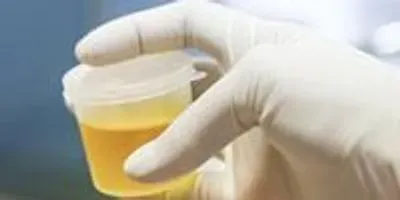
One of the biggest challenges in studying Down syndrome is finding the right research model. Animals and established cell lines are limited in their ability to mimic human disease, and results don’t always translate to patient populations. Stem cells hold enormous potential as research tools that can be collected directly from patients and grown into innumerable cell types. But harvesting stem cells can be tricky and invasive—a tough sell to institutional review boards when dealing with children or patients with intellectual disability.
Now, researchers from Case Western Reserve University School of Medicine have developed a breakthrough technique to harvest cells directly from urine, and grow them into durable, clinically relevant stem cells to study Down syndrome. The non-invasive technique, described in the journal STEM CELLS Translational Medicine, helps creates urgently needed research models for Down syndrome, and can also be used to model other neurologic conditions.
“For the first time, we were able to create induced pluripotent stem cells, or iPSCs, of persons with Down syndrome by cells obtained from urine samples,” said Alberto Costa, MD, PhD, study lead and professor of pediatrics and psychiatry at Case Western Reserve University School of Medicine. “Our methods represent a significant improvement in iPSC technology, and should be an important step toward the development of human cell-based platforms that can be used to test new medications designed to improve the quality of life of people with Down syndrome.”
Related Article: Tari Parmely on the Latest Trends in Cell Culture
Costa’s technique overcomes ethical challenges related to harvesting stem cells that have previously been collected via skin biopsies. According to the paper, “Although only mildly invasive, there have been anecdotal reports that a few IRBs or ethical committees have rejected research proposals for wide-scale use of skin biopsies in individuals with Down syndrome. There has also been anecdotal reports of a significant percentage of persons with Down syndrome or their parents/guardians rejecting the procedure, which has limited the establishment of Down syndrome iPSC banks.” The new technique allows researchers to more easily build collections of stem cells for use in future studies.
Stem cells generated from urine also appear to be more stable than those generated via skin biopsies. Since skin cells are exposed to sunlight, they often have DNA damage caused by ultraviolet radiation. The stem cells generated by Costa’s team did not involve cells exposed to the sun, and were manipulated using methods designed to limit DNA damage. The resultant iPSCs can be reliably grown into many cell types relevant for Down syndrome research, including neurons and heart cells. The study is the first to successfully generate such cells from urine cultures.
In total, Costa’s team generated iPSCs from urine donated by 10 individuals with Down syndrome that can be used by his team and other researchers interested in modeling Down syndrome disease states. The new technique can also be used to generate countless additional cell lines from Down syndrome patients or other vulnerable populations. The new research models offer an ethically sound, clinically relevant, and highly translatable means to study human disease.











